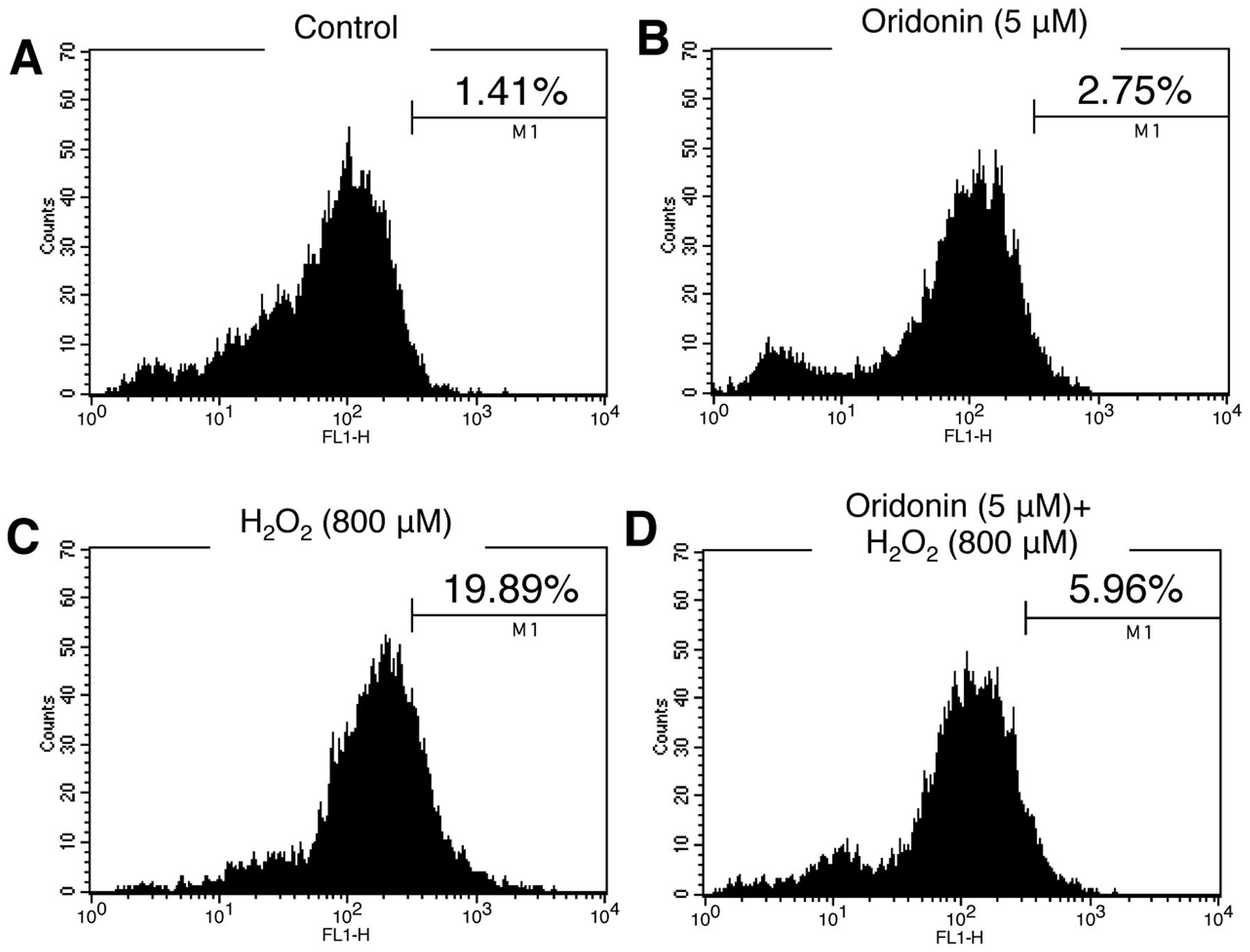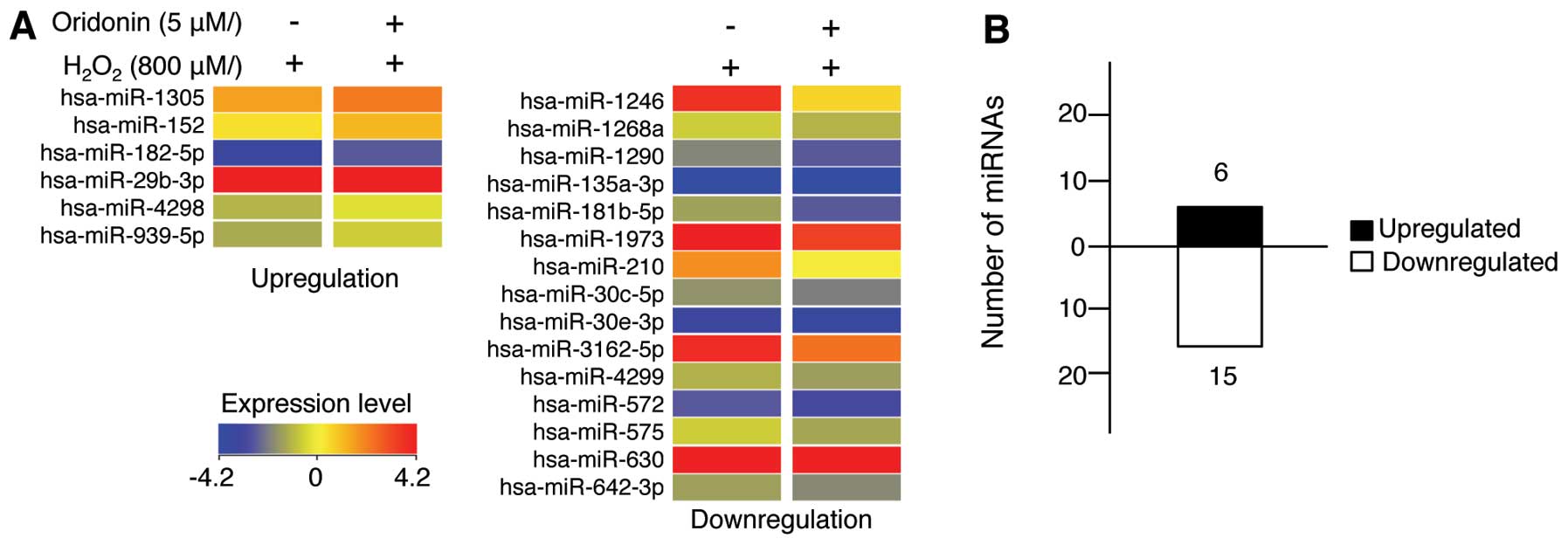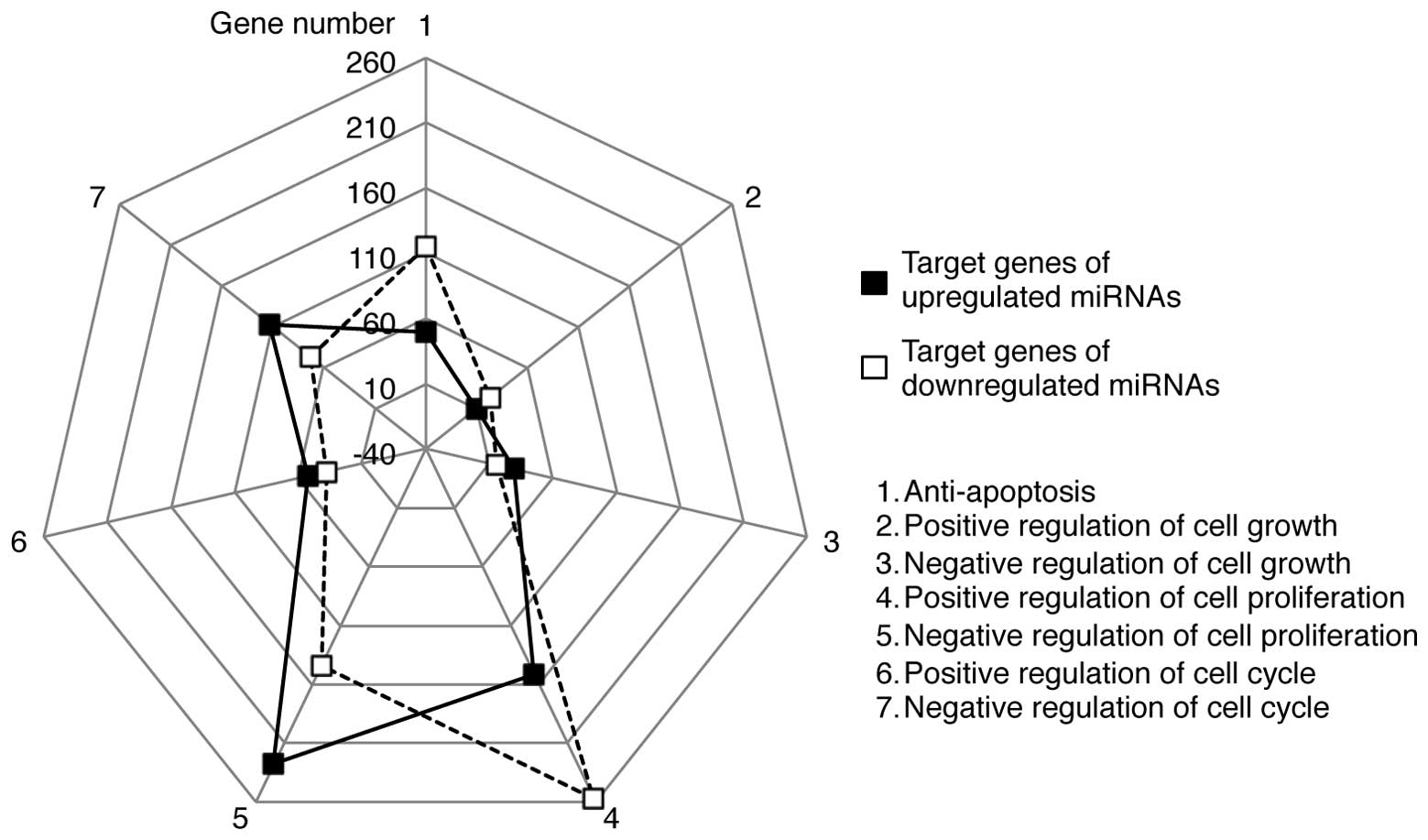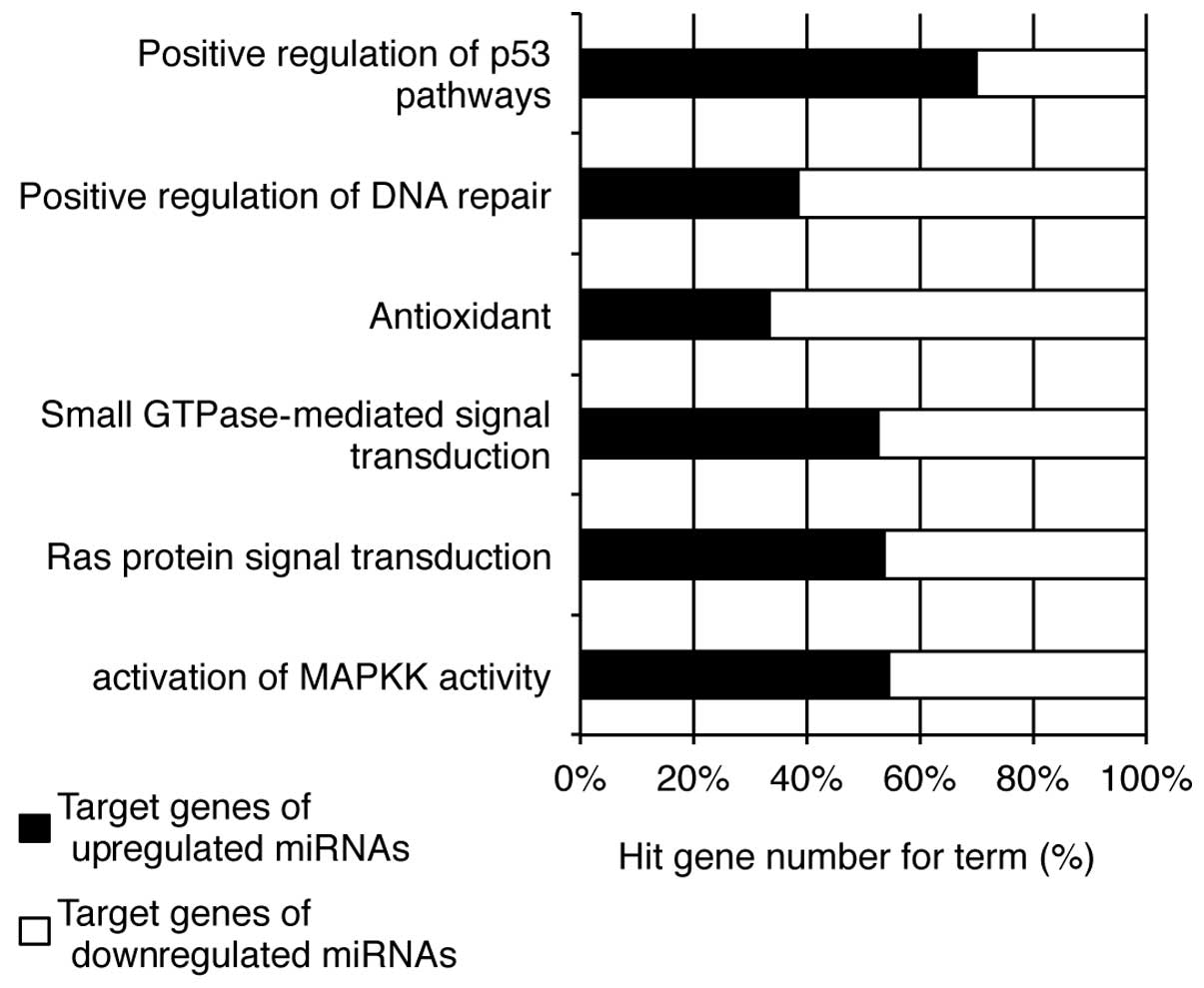|
1
|
Wojas-Pelc A and Marcinkiewicz J: What is
a role of haeme oxygenase-1 in psoriasis? Current concepts of
pathogenesis. Int J Exp Pathol. 88:95–102. 2007. View Article : Google Scholar : PubMed/NCBI
|
|
2
|
Applegate LA, Scaletta C, Panizzon R and
Frenk E: Evidence that ferritin is UV inducible in human skin: part
of a putative defense mechanism. J Invest Dermatol. 111:159–163.
1998. View Article : Google Scholar : PubMed/NCBI
|
|
3
|
Bickers DR and Athar M: Oxidative stress
in the pathogenesis of skin disease. J Invest Dermatol.
126:2565–2575. 2006. View Article : Google Scholar : PubMed/NCBI
|
|
4
|
Briganti S and Picardo M: Antioxidant
activity, lipid peroxidation and skin diseases. What’s new. J Eur
Acad Dermatol Venereol. 17:663–669. 2003.
|
|
5
|
Biswas S, Roy S, Banerjee J, et al:
Hypoxia inducible microRNA 210 attenuates keratinocyte
proliferation and impairs closure in a murine model of ischemic
wounds. Proc Natl Acad Sci USA. 107:6976–6981. 2010. View Article : Google Scholar : PubMed/NCBI
|
|
6
|
Yu J, Peng H, Ruan Q, Fatima A, Getsios S
and Lavker RM: microRNA-205 promotes keratinocyte migration via the
lipid phosphatase SHIP2. FASEB J. 24:3950–3959. 2010. View Article : Google Scholar : PubMed/NCBI
|
|
7
|
Hildebrand J, Rutze M, Walz N, et al: A
comprehensive analysis of microRNA expression during human
keratinocyte differentiation in vitro and in vivo. J Invest
Dermatol. 131:20–29. 2011. View Article : Google Scholar : PubMed/NCBI
|
|
8
|
Xu N, Brodin P, Wei T, et al: MiR-125b, a
microRNA downregulated in psoriasis, modulates keratinocyte
proliferation by targeting FGFR2. J Invest Dermatol. 131:1521–1529.
2011. View Article : Google Scholar : PubMed/NCBI
|
|
9
|
Ichihara A, Jinnin M, Yamane K, et al:
microRNA-mediated keratinocyte hyperproliferation in psoriasis
vulgaris. Br J Dermatol. 165:1003–1010. 2011. View Article : Google Scholar : PubMed/NCBI
|
|
10
|
An IS, An S, Choe TB, et al: Centella
asiatica protects against UVB-induced HaCaT keratinocyte damage
through microRNA expression changes. Int J Mol Med. 30:1349–1356.
2012.
|
|
11
|
Tian W and Chen SY: Recent advances in the
molecular basis of anti-neoplastic mechanisms of oridonin. Chin J
Integr Med. 19:315–320. 2013. View Article : Google Scholar : PubMed/NCBI
|
|
12
|
Wang H, Ye Y, Chui JH, et al: Oridonin
induces G2/M cell cycle arrest and apoptosis through MAPK and p53
signaling pathways in HepG2 cells. Oncol Rep. 24:647–651.
2010.PubMed/NCBI
|
|
13
|
Wang S, Zhong Z, Wan J, et al: Oridonin
induces apoptosis, inhibits migration and invasion on
highly-metastatic human breast cancer cells. Am J Chin Med.
41:177–196. 2013. View Article : Google Scholar : PubMed/NCBI
|
|
14
|
Chen S, Gao J, Halicka HD, Huang X,
Traganos F and Darzynkiewicz Z: The cytostatic and cytotoxic
effects of oridonin (Rubescenin), a diterpenoid from Rabdosia
rubescens, on tumor cells of different lineage. Int J Oncol.
26:579–588. 2005.PubMed/NCBI
|
|
15
|
Du Y, Villeneuve NF, Wang XJ, et al:
Oridonin confers protection against arsenic-induced toxicity
through activation of the Nrf2-mediated defensive response. Environ
Health Perspect. 116:1154–1161. 2008. View Article : Google Scholar : PubMed/NCBI
|
|
16
|
An IS, An S, Kang SM, et al: Titrated
extract of Centella asiatica provides a UVB protective
effect by altering microRNA expression profiles in human dermal
fibroblasts. Int J Mol Med. 30:1194–1202. 2012.
|
|
17
|
Ambros V and Lee RC: Identification of
microRNAs and other tiny noncoding RNAs by cDNA cloning. Methods
Mol Biol. 265:131–158. 2004.PubMed/NCBI
|
|
18
|
Cheng AM, Byrom MW, Shelton J and Ford LP:
Antisense inhibition of human miRNAs and indications for an
involvement of miRNA in cell growth and apoptosis. Nucleic Acids
Res. 33:1290–1297. 2005. View Article : Google Scholar : PubMed/NCBI
|
|
19
|
Chen JF, Mandel EM, Thomson JM, et al: The
role of microRNA-1 and microRNA-133 in skeletal muscle
proliferation and differentiation. Nat Genet. 38:228–233. 2006.
View Article : Google Scholar : PubMed/NCBI
|
|
20
|
Grassmann J: Terpenoids as plant
antioxidants. Vitam Horm. 72:505–535. 2005. View Article : Google Scholar : PubMed/NCBI
|
|
21
|
Gao FH, Liu F, Wei W, et al: Oridonin
induces apoptosis and senescence by increasing hydrogen peroxide
and glutathione depletion in colorectal cancer cells. Int J Mol
Med. 29:649–655. 2012.PubMed/NCBI
|
|
22
|
Favaro E, Ramachandran A, McCormick R, et
al: microRNA-210 regulates mitochondrial free radical response to
hypoxia and krebs cycle in cancer cells by targeting iron sulfur
cluster protein ISCU. PLoS One. 5:e103452010. View Article : Google Scholar : PubMed/NCBI
|
|
23
|
Kim JH, Park SG, Song SY, Kim JK and Sung
JH: Reactive oxygen species-responsive miR-210 regulates
proliferation and migration of adipose-derived stem cells via
PTPN2. Cell Death Dis. 4:e5882013. View Article : Google Scholar : PubMed/NCBI
|
|
24
|
Huang X, Ding L, Bennewith KL, et al:
Hypoxia-inducible mir-210 regulates normoxic gene expression
involved in tumor initiation. Mol Cell. 35:856–867. 2009.
View Article : Google Scholar : PubMed/NCBI
|
|
25
|
Liao JM, Zhou X, Zhang Y and Lu H:
MiR-1246: a new link of the p53 family with cancer and Down
syndrome. Cell Cycle. 11:2624–2630. 2012. View Article : Google Scholar : PubMed/NCBI
|
|
26
|
Woodworth CD, Wang H, Simpson S,
Alvarez-Salas LM and Notario V: Overexpression of wild-type p53
alters growth and differentiation of normal human keratinocytes but
not human papillomavirus-expressing cell lines. Cell Growth Differ.
4:367–376. 1993.PubMed/NCBI
|
|
27
|
Truong AB and Khavari PA: Control of
keratinocyte proliferation and differentiation by p63. Cell Cycle.
6:295–299. 2007. View Article : Google Scholar : PubMed/NCBI
|
|
28
|
Zhu W, Shan X, Wang T, Shu Y and Liu P:
miR-181b modulates multidrug resistance by targeting BCL2 in human
cancer cell lines. Int J Cancer. 127:2520–2529. 2010. View Article : Google Scholar : PubMed/NCBI
|
|
29
|
Dumont M and Beal MF: Neuroprotective
strategies involving ROS in Alzheimer disease. Free Radic Biol Med.
51:1014–1026. 2011. View Article : Google Scholar : PubMed/NCBI
|
|
30
|
Schipper HM, Maes OC, Chertkow HM and Wang
E: microRNA expression in Alzheimer blood mononuclear cells. Gene
Regul Syst Bio. 1:263–274. 2007.PubMed/NCBI
|
|
31
|
Segura MF, Hanniford D, Menendez S, et al:
Aberrant miR-182 expression promotes melanoma metastasis by
repressing FOXO3 and microphthalmia-associated transcription
factor. Proc Natl Acad Sci USA. 106:1814–1819. 2009. View Article : Google Scholar : PubMed/NCBI
|
|
32
|
Hirata H, Ueno K, Shahryari V, et al:
microRNA-182-5p promotes cell invasion and proliferation by down
regulating FOXF2, RECK and MTSS1 genes in human prostate cancer.
PLoS One. 8:e555022013. View Article : Google Scholar : PubMed/NCBI
|
|
33
|
Liu Z, Liu J, Segura MF, et al: MiR-182
overexpression in tumourigenesis of high-grade serous ovarian
carcinoma. J Pathol. 228:204–215. 2012. View Article : Google Scholar : PubMed/NCBI
|















